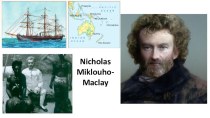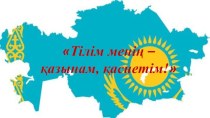- Главная
- Разное
- Бизнес и предпринимательство
- Образование
- Развлечения
- Государство
- Спорт
- Графика
- Культурология
- Еда и кулинария
- Лингвистика
- Религиоведение
- Черчение
- Физкультура
- ИЗО
- Психология
- Социология
- Английский язык
- Астрономия
- Алгебра
- Биология
- География
- Геометрия
- Детские презентации
- Информатика
- История
- Литература
- Маркетинг
- Математика
- Медицина
- Менеджмент
- Музыка
- МХК
- Немецкий язык
- ОБЖ
- Обществознание
- Окружающий мир
- Педагогика
- Русский язык
- Технология
- Физика
- Философия
- Химия
- Шаблоны, картинки для презентаций
- Экология
- Экономика
- Юриспруденция
Что такое findslide.org?
FindSlide.org - это сайт презентаций, докладов, шаблонов в формате PowerPoint.
Обратная связь
Email: Нажмите что бы посмотреть
Презентация на тему по английскому языку на тему THE WORLD’S OLDEST SPACE STATION
Содержание
The Baikonur Cosmodrome also called Tyuratam, is the world's first and largest operational space launch facility. It is located in the desert steppe of Kazakhstan, about 200 kilometres east of the Aral
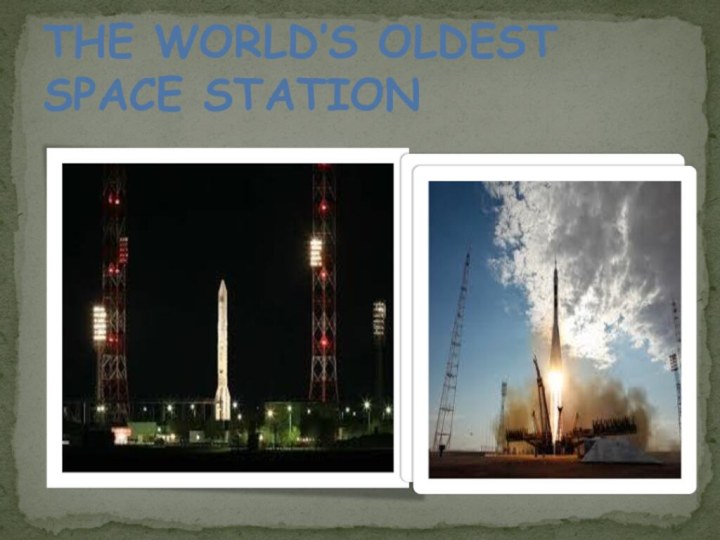

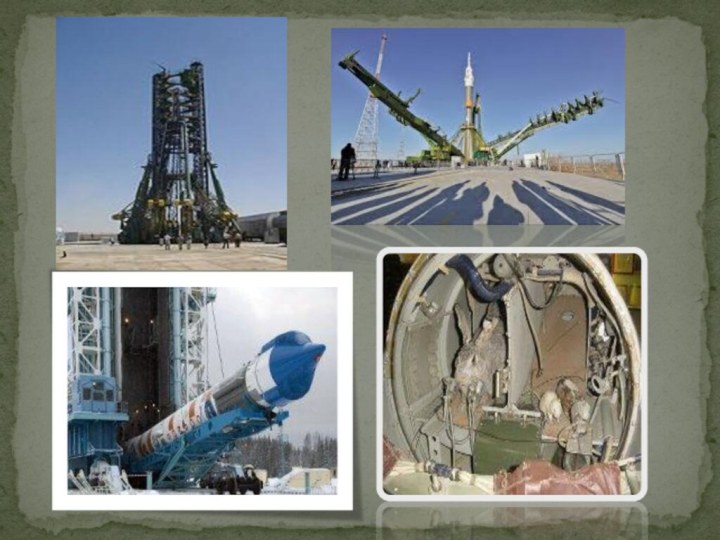





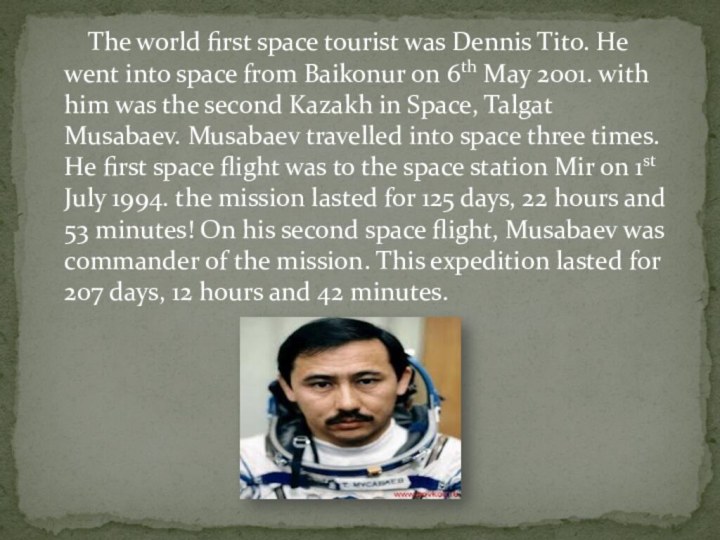
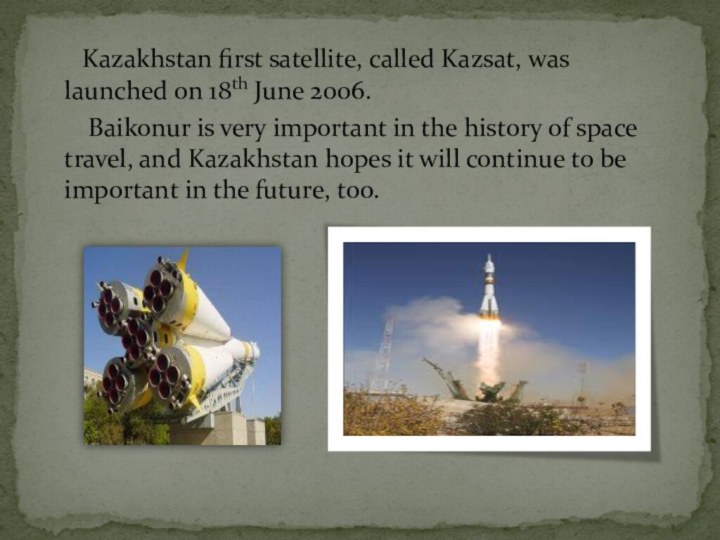
Слайд 4 The Soviet government issued
the decree about Scientific-Research Test Range No. 5 (NIIP-5;
Russian: Nauchno-Issledovatel’skii Ispytatel’nyi Poligon N.5) on 12 February 1955. It was actually founded on 2 June 1955, originally a test center for the world's first intercontinental ballistic missile (ICBM),[5] the R-7 Semyorka. NIIP-5 was soon expanded to include launch facilities for space flights. The site was selected by a commission led by Gen. Vasily Voznyuk, influenced by Sergey Korolyov, the Chief Designer of the R-7 ICBM, and soon the man behind the Soviet space program. It had to be surrounded by plains, as the radio control system of the rocket required (at the time) receiving uninterrupted signals from ground stations hundreds kilometres away.[6] Additionally, the missile trajectory had to be away from populated areas. Taking these two constraints into consideration, the commission chose Tyuratam, a village in the heart of the Kazakh Steppe. The expense of constructing the launch facilities and the several hundred kilometres of new road and train lines made the Cosmodrome one of the most costly infrastructure projects the Soviets undertook. A supporting town was built around the facility to provide housing, schools and support infrastructure for workers. It was raised to city status in 1966 and named Leninsk (presently Baikonur).HISTORY
Слайд 5
Jn 4th
October 1957, the worlds first satellite was launched from Baikonur. It was called Sputnik 1.A month later, on 3rd November 1957 Sputnck was launched. Inside the satellite was the firast, dog to travel into space. Its name was Laika.























